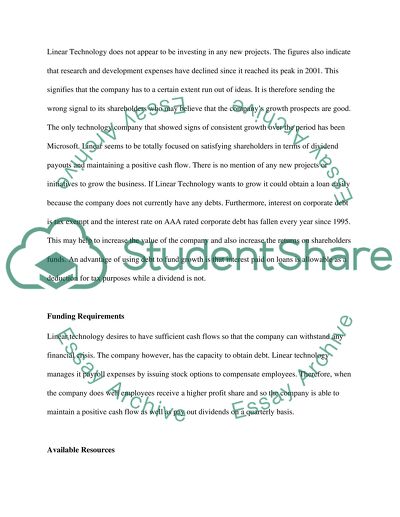Cite this document
(“Dividend policy at Linear technology Case Study”, n.d.)
Retrieved from https://studentshare.org/finance-accounting/1423867-dividend-policy-at-linear-technology
Retrieved from https://studentshare.org/finance-accounting/1423867-dividend-policy-at-linear-technology
(Dividend Policy at Linear Technology Case Study)
https://studentshare.org/finance-accounting/1423867-dividend-policy-at-linear-technology.
https://studentshare.org/finance-accounting/1423867-dividend-policy-at-linear-technology.
“Dividend Policy at Linear Technology Case Study”, n.d. https://studentshare.org/finance-accounting/1423867-dividend-policy-at-linear-technology.


